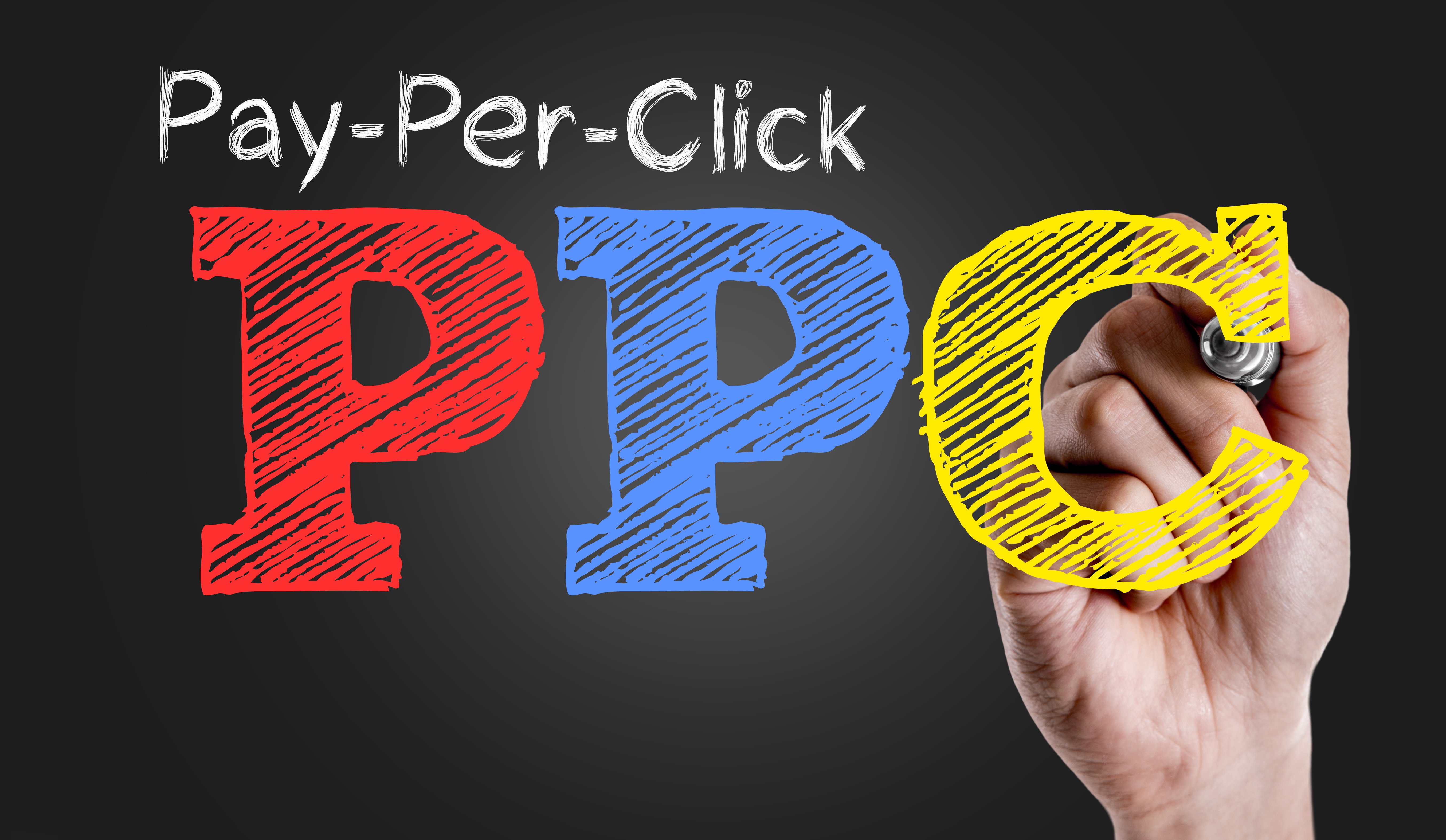
Top 5 Pay-Per-Click Strategies for Tech Firms

Pay-per-click (PPC) advertising can be a game-changer for tech firms looking to boost their online visibility and drive targeted traffic to their websites. But to achieve the best ROI, it's crucial to adopt a strategic approach. Here are the top 5 PPC strategies for tech firms:
Table of Contents
1. Keywords
In the dynamic landscape of digital advertising, Pay-Per-Click (PPC) strategies have emerged as indispensable tools for tech firms seeking to thrive in the online marketplace. Yet, amidst the ever-evolving competition and rapid technological advancements, the success of PPC campaigns hinges on one critical element—targeting the right keywords. Find out more about keywords in our previous post here.
Targeting the right keywords is a defining factor due to:
- Relevance: Targeting the right keywords ensures that your ads align with what potential customers are searching for. When your ads are closely related to the user's query, you increase the likelihood of capturing their attention.
- Cost Efficiency: Well-targeted keywords can lead to cost-efficient campaigns. When your ads appear for relevant searches, you're more likely to receive clicks from users genuinely interested in your tech offerings.
- Quality Score: Search engines like Google take into account the relevance of your chosen keywords to your ad and landing page. A higher Quality Score positively impacts your ad position and can lower your advertising costs.
- Ad Position: Targeting the right keywords leads to a higher ad position. When your ads rank higher in search results, they gain better visibility, which translates into a higher click-through rate.
- Conversion Rate: When your ads are displayed for the right keywords, you're more likely to attract users with high purchase intent. This increases the likelihood of a higher conversion rate.
To effectively target the right keywords for PPC success in the tech industry, consider the following strategies:
- Keyword Research: Initiate your PPC strategy with comprehensive keyword research. Identify industry-specific terms and phrases that potential customers are using to search for tech solutions. Use keyword research tools to discover relevant keywords.
- Long-Tail Keywords: Don't underestimate the power of long-tail keywords. These are longer, more specific keyword phrases that cater to niche audiences. They often have lower competition and can deliver highly qualified traffic.
- Competitor Analysis: Analyze the keywords your tech competitors are targeting. This can provide valuable insights and uncover opportunities to enhance your keyword strategy.
- Search Intent: Understand the search intent behind keywords. Are users looking for information, software downloads, product purchases, or tech support? Tailor your ad copy and landing pages to align with this intent.
- Negative Keywords: Implement negative keywords to filter out irrelevant traffic. This prevents your ads from displaying for searches that don't align with your tech offerings.
- A/B Testing: Continuously test different ad copy and landing pages to determine which combinations resonate best with your target audience. Use data-driven insights to refine your PPC strategy.

2. Ad Copy
In the realm of Pay-Per-Click (PPC) advertising, it's not just about choosing the right keywords but also about presenting your message in a way that captivates your audience and drives action. For tech firms navigating the competitive digital landscape, optimizing ad copy is an art that can make all the difference in the success of your PPC campaigns.
Why is optimizing ad copy a crucial component of PPC success for tech firms?
- Engagement: Well-optimized ad copy piques the interest of your target audience. It's the hook that entices users to click on your ads and explore your offerings.
- Relevance: Ad copy that directly relates to the user's search query or needs is more likely to resonate with your audience. Relevance is key in capturing their attention and trust.
- Quality Score: Search engines assess the quality and relevance of your ad copy to determine your Quality Score. A higher Quality Score can lead to a better ad position and lower costs per click.
- Conversion Rate: Thoughtfully crafted ad copy can lead to a higher conversion rate. When users find the information they seek and a compelling reason to act, they're more likely to become customers or leads.
Here are some strategies to optimize your ad copy effectively for PPC success in the tech industry:
- Highlight Unique Selling Points (USPs): What sets your tech offerings apart? Is it innovation, speed, reliability, or cost-effectiveness? Incorporate these USPs into your ad copy to distinguish your brand.
- Include Keywords: Ensure your target keywords are present in your ad copy. This not only reinforces relevance but can also make your ads more noticeable to users.
- Use Action-Oriented Language: Encourage users to take action with clear and compelling language. Employ action verbs like "get," "try," "buy," or "discover" to prompt clicks.
- Speak to User Needs: Address the specific needs and pain points of your target audience. Show how your tech solutions can solve their problems.
- Leverage Ad Extensions: Take advantage of ad extensions, such as site link extensions and callout extensions, to provide additional information and entice users with extra value.
- A/B Testing: Continuously test different ad copy variations to see which messages resonate best with your audience. Use data-driven insights to refine and optimize your ad copy.
- Mobile Optimization: Given the prevalence of mobile users, ensure that your ad copy is optimized for mobile devices. Short, concise messages often work well on smaller screens.
3. Geo-targeting
In the realm of Pay-Per-Click (PPC) advertising, precision is paramount, especially for tech firms vying for attention in a globally connected world. Geo-targeting is a dynamic tool that enables tech companies to focus their PPC campaigns on specific geographic regions, delivering personalized messages to audiences in precise locations.
This strategy not only maximizes the relevance of your ads but also optimizes your budget for maximum impact. Find out more about Geo-targeting in this post here.
Here's why leveraging geo-targeting is a game-changer for PPC success in the tech industry:
- Relevance: Geo-targeting allows you to tailor your ad copy and offerings to specific regions. When your ads align with local needs and preferences, you increase the likelihood of capturing the attention of your audience.
- Cost Efficiency: By narrowing the geographic scope of your campaigns, you can allocate your budget more efficiently. Instead of reaching a broad, generic audience, you focus your resources on users with a higher likelihood of conversion.
- Local Competition: In the tech industry, regional competition can vary significantly. Geo-targeting enables you to penetrate markets where you face less competition, increasing your visibility and chances of success.
- Local Events: Capitalize on local events or tech-related occasions in specific regions. Geo-targeting allows you to time your campaigns to coincide with events that are relevant to your tech solutions.
Here are strategies to effectively leverage geo-targeting in your tech PPC campaigns:
- Define Your Target Areas: Start by identifying the regions where your tech offerings have the most potential or where you aim to expand your market presence.
- Customize Ad Copy: Tailor your ad copy to resonate with the specific needs and preferences of users in each targeted region. Mention local references, such as events, landmarks, or community aspects, to establish a local connection.
- Use Location-Based Keywords: Incorporate location-specific keywords into your ad campaigns. This increases your ad's visibility when users search for tech solutions in a particular area.
- A/B Testing: As with ad copy, conduct A/B testing to determine which geo-targeted messages are most effective in different regions. Use data-driven insights to refine your approach.
- Analyze Performance: Continuously monitor the performance of your geo-targeted campaigns. Assess click-through rates, conversion rates, and ROI for each region. Adjust your strategy based on the data to optimize results.
- Mobile Optimization: Given the prevalence of mobile device usage, ensure that your geo-targeted campaigns are optimized for mobile users. This is especially important for local businesses seeking foot traffic.

4. Ad Scheduling
In the dynamic world of Pay-Per-Click (PPC) advertising, timing can be just as critical as targeting. Tech firms looking to make the most of their PPC campaigns can gain a significant advantage by implementing ad scheduling. This strategy allows you to control when your ads are displayed, ensuring that they reach your audience at the most opportune moments.
Why is ad scheduling a vital component of PPC success in the tech industry?
- Relevance: Ad scheduling lets you align your ads with your audience's daily routines. When your ads appear at the right time, you enhance their relevance and increase the chances of capturing your audience's attention.
- Budget Efficiency: You can optimize your budget by showing ads during peak engagement times. This prevents wasted spend during periods when your audience is less active.
- Competitive Edge: In the tech sector, competition can be fierce. Ad scheduling allows you to strategize against competitors by focusing on times when they are less active or when your audience is more receptive.
- Event Timing: Ad scheduling enables you to coincide your campaigns with specific tech-related events, product launches, or software updates. This is particularly valuable for tech firms looking to make a big impact at a critical moment.
To implement ad scheduling effectively in your tech PPC campaigns, follow these strategies:
- Analyze Audience Behavior: Start by analyzing your audience's behavior. Consider factors such as time zones, typical usage hours, and days of the week when engagement is highest.
- Segment Your Campaigns: Divide your campaigns into segments that target different timeframes. This could include weekday mornings, evenings, weekends, or even specific days aligned with tech events or announcements.
- Customize Ad Copy: Tailor your ad copy to align with the time of day or day of the week. Highlight specific offers, features, or solutions that are most relevant during those periods.Monitor and Adjust: Continuously monitor the performance of your scheduled ads. Use analytics to determine when engagement and conversion rates are highest. Make adjustments based on the data to optimize your ad scheduling.
- Combine with Geo-Targeting: Consider combining ad scheduling with geo-targeting to reach the right audience at the right time and in the right location. This can be particularly effective for tech firms operating in multiple time zones.
- Mobile Optimization: Ensure your ad scheduling strategy includes optimization for mobile devices, as mobile users often have different engagement patterns compared to desktop users.
5. Monitor and Adjust
Once your pay-per-click (PPC) campaigns have been launched, it is crucial to continuously monitor and adjust them to ensure their effectiveness. This process involves tracking the performance of your campaigns and making necessary changes to optimize their results.
Tracking Performance
The first step in monitoring your campaigns is to track their performance using tools such as Google Analytics or Bing Ads. These tools provide valuable data and insights on various metrics, including click-through rates (CTR), conversion rates, and cost per click (CPC). By regularly reviewing this data, you can identify which campaigns are performing well and which ones may require adjustments.
Making Necessary Changes
Based on the performance data collected, it is essential to make necessary changes to your campaigns. This can include adjusting keyword bids, ad copy, and targeting options. For example, if a particular campaign is not generating enough clicks or conversions, you may need to increase the bid for relevant keywords or change the wording of your ads to make them more appealing.
Optimizing Results
By regularly monitoring and making adjustments to your campaigns, you can optimize their results and achieve a better return on investment (ROI). This process involves continuously testing different strategies to determine what works best for your target audience. For instance, you may want to experiment with different ad formats or targeting options to see which ones generate the most clicks and conversions.
The Importance of Continuous Monitoring
It is crucial to note that PPC campaigns are not a one-time setup-and-forget strategy. They require constant monitoring and adjustments to remain effective. By neglecting this aspect, you risk wasting your advertising budget on underperforming campaigns, which can result in a low ROI.
Best Practices for Monitoring PPC Campaigns
To effectively monitor and adjust your campaigns, here are some best practices to keep in mind:
- Set up conversion tracking: This allows you to track the number of conversions generated by your campaigns, which is essential in determining their success.
Utilize A/B testing: This involves creating two versions of an ad or landing page and comparing their performance to identify which one works better. - Keep a close eye on metrics: It is important to regularly review metrics such as CTR, conversion rate, and average position to identify areas that require improvement.
- Monitor ad performance by device: With the rise of mobile usage, it is crucial to monitor how your ads perform on different devices and make necessary adjustments accordingly.
By following these best practices, you can effectively monitor and adjust your PPC campaigns for optimal results. Remember, continuously testing and optimizing your strategies is key to staying ahead of the competition in the ever-changing digital landscape.

Final Thoughts
In conclusion, these five PPC strategies for tech firms hold the potential to transform your online advertising efforts and elevate your tech offerings to new heights. Whether you're targeting the right keywords, optimizing ad copy, leveraging geo-targeting, implementing ad scheduling, or focusing on quality score improvement, the key is to stay agile and data-driven.
As you navigate the ever-evolving tech landscape, Two Trees PPC is here to guide you on your journey to success. Our team of experts is ready to assist you in implementing these strategies, optimizing your campaigns, and delivering results that matter. Don't miss out on the opportunity to lead the way in the tech industry.
Contact Two Trees PPC today, and let's embark on a path to PPC excellence that drives growth, engages your audience, and places your tech solutions in the spotlight. Your tech success story begins here.

